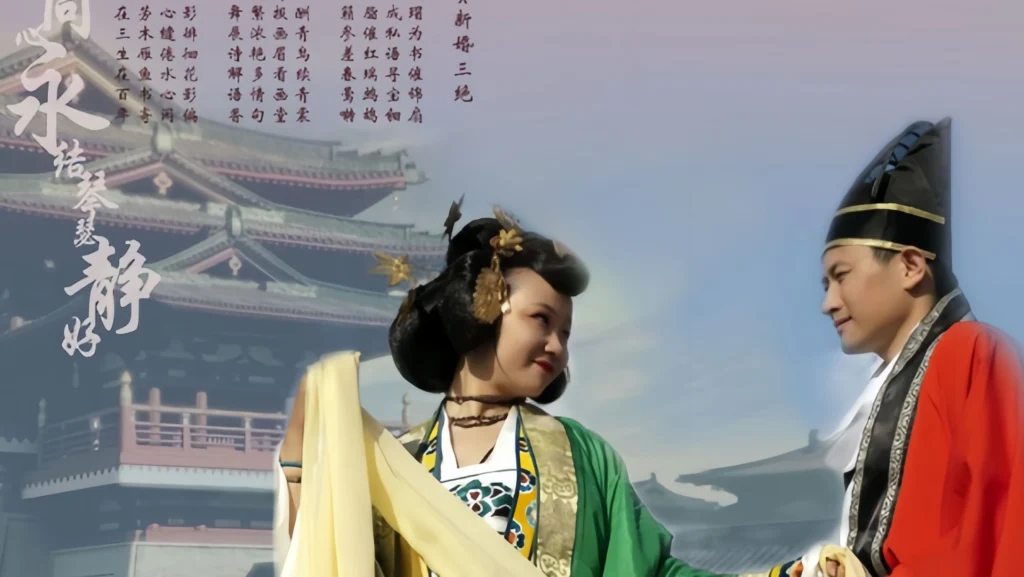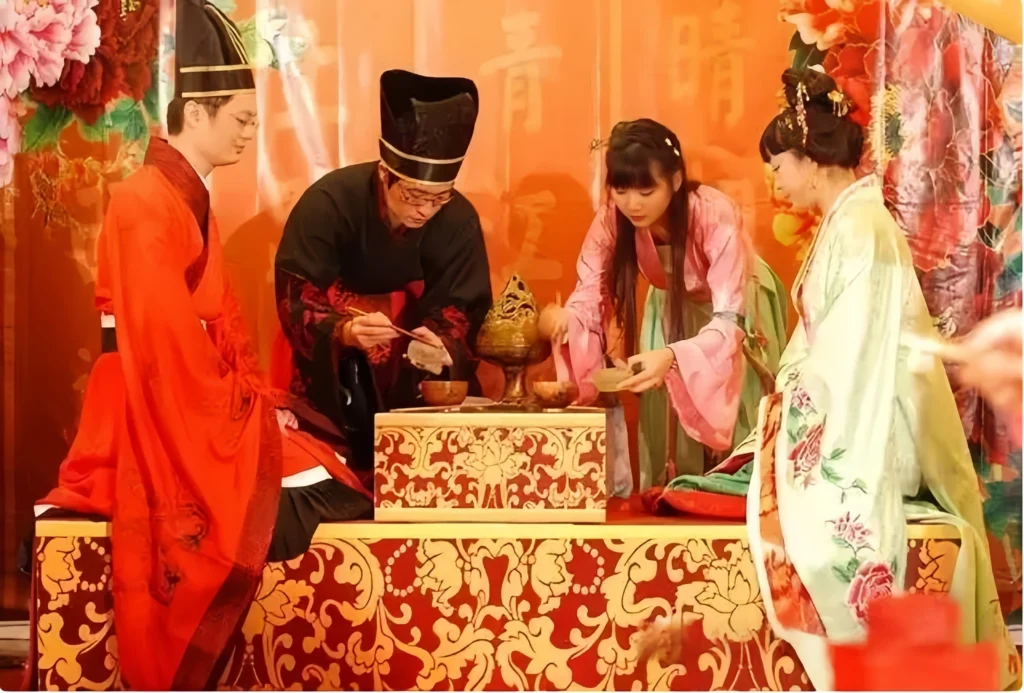Huaxia Wedding: Cherishing Memories of Years Past, Growing Old Together with Love

The Five Rites Comprehensive Study notes that since the Later Qi, whether for emperors or commoners, weddings followed six steps: “1. Na Cai (proposal), 2. Xiang Ming (asking the name), 3. Na Ji (accepting the omen), 4. Na Zheng (offering betrothal gifts), 5. Qing Qi (requesting the date), 6. Qin Ying (welcoming the bride).” These are the famous “Six Rites” of ancient weddings.

Ancient Six Rites
Na Cai (Proposal): The first step in matchmaking—after a matchmaker proposes on behalf of the groom, the bride’s family agrees, and the groom sends gifts to propose. The gift? Live geese. Why geese? As migratory birds, they symbolize harmony with yin and yang. Later, it also meant lifelong loyalty, as a goose won’t pair again after losing its mate.
Xiang Ming (Asking the Name): Post-proposal, the groom sends a matchmaker to ask for the bride’s birth date and name to check compatibility.
Na Ji (Accepting the Omen): After checking compatibility, the good news is shared with the bride’s family in a ritual called “Ding Meng” (pledging the alliance)—the main engagement step. Traditionally, geese were used as a sign the deal was set. Over time, this evolved to rings, jewelry, colored silk, ritual cakes, incense, even sheep or pigs, also known as “sending the betrothal” or “fixing the engagement.”
Na Zheng (Offering Betrothal Gifts): Post-engagement, the groom’s family sends gifts to the bride’s, marking the wedding phase, also called “completing the betrothal,” “big betrothal,” or “over the big rite.” Later, they added a return gift—returning some food or all, or sending the groom clothes, hats, and socks. Gifts were chosen for lucky meanings, with even numbers preferred over odd.
Qing Qi (Requesting the Date): After gifts, the groom picks a wedding date, sends simple gifts to the bride’s family for approval. Geese were traditional, but gifts were light—often combined with the betrothal rite to set the date.
Qin Ying (Welcoming the Bride): The groom personally visits the bride’s home to bring her back, seen as the wedding’s main event, with the first five steps as pre-wedding prep.
Actually, what we call a Chinese wedding splits into Han-style weddings and modern folk weddings. Han-style, the OG Huaxia wedding, follows Zhou rites, while modern folk weddings evolved from Republican-era tweaks.

Han-Style Wedding
Han-style weddings include Zhou, Tang, Song, and Ming versions, all based on Zhou rites, with each era’s Hanfu style and details as the big difference. Ancient weddings happened at dusk, earning the name “Hun Li” (dusk rite). Here’s a quick rundown of the flow.
Prep and Na Cai (Proposal): Geese held deep meaning in ancient weddings, from “Yong yong ming yan, xu ri shi dan. Shi ru gui qi, dai bing wei pan”—geese calling at dawn, when the groom starts his journey with geese before mid-January, before the February wedding. Geese symbolize devotion—lose a mate, and they stay single. This tradition lingers in Zhejiang and southern regions, where a goose pair is still part of the dowry.

Act 1: Opening Declaration The master of ceremonies enters, zither and lute play, kicking off the wedding.
Act 2: Welcoming the Bride, Couple’s Entrance

Act 3: Wo Guan Rite From Zhou Li • Chun Guan • Yu Ren: “All rituals need Wo Guan.” Sun Yirang explains: “Wo Guan means washing hands before the rite, with someone pouring water from a ewer into a basin.” Left Transmission • Xi Gong 23rd Year notes “Huai Ying poured water for washing,” and Tang Lu Lun’s poem mentions “Wo Guan with spring water.”
Left Transmission • Xi Gong 23rd Year records “Feng Yi Wo Guan”—pouring water to wash hands and face, a key pre-ceremony ritual.

Act 4: Tong Lao Rite Hun Yi says: “Share a meal from one tray, drink from one gourd, uniting body and status to bond them.” The table has three meat dishes, called “Lao.” Ancient dining was like today’s portioned meals—each got rice, millet, sauces, pickles, and pastes. But weddings were special: one meat dish sat between the couple, eaten together as “Tong Lao.”

Act 5: He Jin Rite “Jin” is a gourd split in half—each partner drinks from one, swapping and finishing, like a toast. The gourd’s bitterness with sweet wine means sharing life’s ups and downs.
Act 6: Jie Ying Jie Fa Rite From Han Su Wu’s Four Poems III: “Tied hair as spouses, love with no doubt”—the origin of “tied-hair couple.” This cuts a lock from each, wrapped in a red pouch, sealing their union. “Jie Ying” is the groom untying the bride’s engagement ribbon; “Jie Fa” has her snip his hair, both kept in a pouch by her.
Act 7: Hand-Holding Rite “Hold your hand, grow old with you.” The couple joins hands, stepping into a happy life, accepting guests’ blessings, ending the rite.
Act 8: Ceremony Complete Peach blossoms bloom, radiant and bright, Flutes and strings play, red silks entwine, A fusion of culture and art unfolds, “With a feast for guests, all gather to celebrate,” Like stepping through a thousand years.





Responses